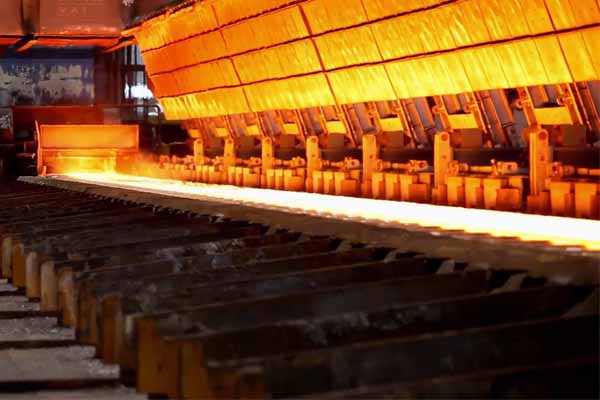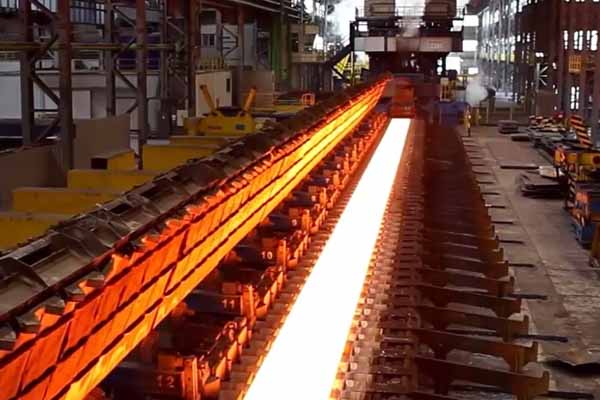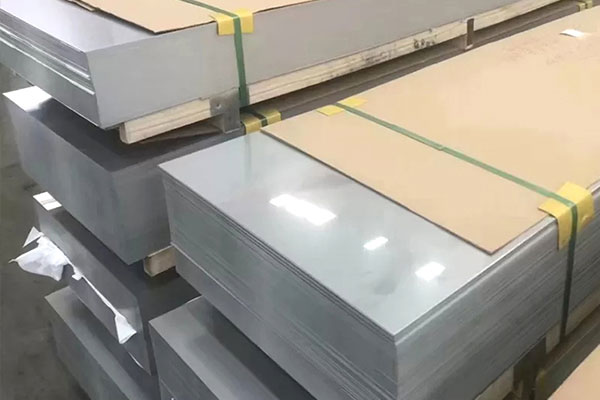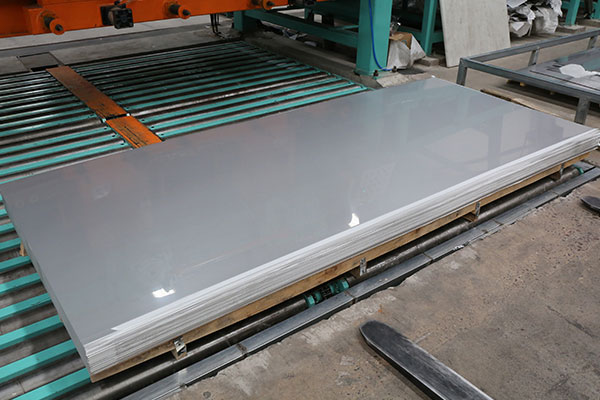The properties and organization of stainless steel are mainly determined by various elements. At present, there are more than 100 known chemical elements, and the elements that have the greatest impact on the properties and structure of stainless steel are: carbon, chromium, nickel, manganese, nitrogen, titanium, niobium, molybdenum, copper, aluminum, silicon, vanadium, tungsten , boron and more than ten kinds. Due to the addition of these elements, the internal structure of the steel changes, so that the steel has special properties. The effects of various elements on the properties and structure of stainless steel are as follows.
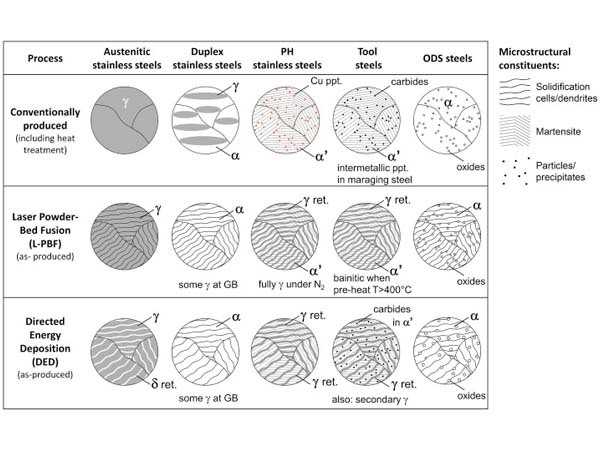
(1) Chromium - the basic element that constitutes stainless steel
Chromium is the most basic element that determines the corrosion resistance of stainless steel. In an oxidizing medium, chromium can quickly form a chromium-rich oxide film on the surface of the steel that is actually impermeable and insoluble to the corrosive medium. This oxide film is very dense and basically bonded to the metal. It can protect the steel from further oxidation and corrosion of the external medium; chromium can also effectively improve the electrode potential of the steel. When the chromium content is not less than 12.5%(molar fraction), the electrode potential of the steel can be abruptly changed from negative potential to positive electrode potential, which can significantly improve the corrosion resistance of steel. The higher the chromium content, the better the corrosion resistance of the steel. When the chromium content reaches 25% and 375% (molar fraction), the second and third sudden changes will occur, making the steel have higher corrosion resistance.
(2) Nickel alone cannot constitute stainless steel
The effect of nickel on the corrosion resistance of stainless steel can only be fully demonstrated when it is combined with chromium. Because low carbon. In order to obtain pure austenitic structure of nickel steel, the nickel content needs to be 24%; in order to make the corrosion resistance of steel in certain media change significantly, the nickel content needs to be more than 27%. Therefore, nickel alone cannot constitute stainless steel. Adding 9% nickel to the steel containing 18% chromium can make the steel obtain a single austenite structure at room temperature, and can improve the steel's resistance to non-oxidizing media (such as: dilute sulfuric acid, hydrochloric acid, phosphoric acid, etc.) Corrosion resistance, and can improve the process performance of steel welding and cold bending.
(3) Manganese and nitrogen - can replace nickel in chromium-nickel stainless steel
Manganese and nitrogen have similar effects to nickel in stainless steel. The stable austenite effect of manganese is 1/2 of that of nickel, and the effect of nitrogen is much larger than that of nickel, about 40 times that of nickel. Therefore, manganese and nitrogen can replace nickel to obtain a single austenite structure. However, the addition of manganese will reduce the corrosion resistance of stainless steel with low chromium content. At the same time, high manganese austenitic steel is not easy to process. Therefore, manganese is not used alone in stainless steel, but only partially replaces nickel.
(4) Carbon - has duality in stainless steel
The content of carbon in stainless steel and its distribution form, to a large extent, affect the properties and composition of stainless steel.
Weave: On the one hand, carbon is a stable austenitic element, and it acts to a great extent, about 30 times that of nickel. The (martensitic) stainless steel with high carbon content can fully accept quenching and strengthening, so it can be improved in mechanical properties. greatly improve it
On the other hand, due to the great affinity of carbon and chromium, 17 times the amount of carbon and chromium in stainless steel are used.
It combines into chromium carbide. As the carbon content in the steel increases, more chromium forms carbides with carbon, thereby significantly reducing the corrosion resistance of the steel. Therefore, in terms of strength and corrosion resistance, the role of carbon in stainless steel is contradictory. In practical applications, in order to achieve the purpose of corrosion resistance, the carbon content of stainless steel is generally low and mostly around 01%. In order to further improve the corrosion resistance of steel, especially the ability to resist intergranular corrosion, ultra-low carbon steel Stainless steel has a carbon content of 0.03% or even lower; but for the manufacture of rolling bearings, arrows, tools and other stainless steels, due to the high hardness and wear resistance required, the carbon content is relatively high, generally in the 0.85%~1.00%, such as 9Cr18 steel, etc.
(5) Titanium and niobium - can prevent intergranular corrosion of stainless steel
When stainless steel is heated to 450~800°C, the chromium content near the grain boundary is often reduced due to the precipitation of chromium carbides at the grain boundary to form a chromium-depleted area, which leads to a drop in the electrode potential near the grain boundary, resulting in electrochemical corrosion. This corrosion is called intergranular corrosion. A common example is intergranular corrosion that occurs in the heat-affected zone near the weld. Titanium and niobium are strong carbide forming elements, and their affinity with carbon is much greater than that of chromium. Adding titanium or niobium to steel can make carbon in steel form carbides with titanium or niobium first, not with chromium. Carbides are formed to ensure that intergranular corrosion will not occur near the grain boundaries due to poor chromium. Therefore, titanium and niobium are often used to fix carbon in steel, improve the ability of stainless steel to resist intergranular corrosion, and improve the weldability of steel.
The addition amount of titanium or niobium should be determined according to the carbon content. Generally, the addition amount of titanium is 5 times that of carbon content, and the addition amount of niobium is 8 times that of carbon.
(6) Molybdenum and copper - can improve the corrosion resistance of certain stainless steels to certain media
Molybdenum and pins can improve the corrosion resistance of stainless steel to corrosive media such as sulfuric acid and acetic acid. Molybdenum can also significantly improve the corrosion resistance in chloride-containing media (such as hydrochloric acid) and organic acids. However, molybdenum-containing stainless steel should not be used in nitric acid. The corrosion rate of molybdenum-containing stainless steel in boiling 65% nitric acid is doubled compared with that without molybdenum; the addition of copper to chromium-manganese-nitrogen stainless steel will accelerate the intergranular corrosion of stainless steel.
Molybdenum has an adverse effect on the single austenite structure of the steel. Therefore, in the molybdenum-containing steel, in order to make the steel have a single austenite structure after heat treatment, the content of elements such as nickel and manganese should be increased accordingly.
(7) Silicon and aluminum - can improve the oxidation resistance of stainless steel
The effect of silicon on improving the oxidation resistance of chromium steel is very significant. The steel containing 5% chromium and 1% silicon. The force can be equal to that of steel with 12% chromium. If the steel can resist oxidation at 1000℃, 22% chromium is needed when it contains 05% silicon. For example, after adding 25%~3% silicon, only 12% chromium is needed. Some information also introduced that adding 25% silicon to Cr15Ni20 chromium-nickel steel, the oxidation resistance can be equivalent to Cr15Ni60 chromium-nickel alloy.
Adding aluminum to high-chromium steel can also significantly improve the oxidation resistance, and its function is similar to that of adding silicon. The purpose of adding silicon and aluminum to high-chromium steel; one is to further improve the oxidation resistance of steel; the other is to save chromium. Although silicon and aluminum play a great role in improving the oxidation resistance of chromium steel, they also have many disadvantages. The main thing is that it increases the grain coarsening and brittle tendency of the steel.
(8) Tungsten and Vanadium
Tungsten and vanadium are added to steel, and their main function is to improve the thermal strength of steel.
(9) Boron
Adding 0005% boron to high chromium ferritic stainless steel (Cr17Mo2Ti) can make the steel in boiling 65% vinegar. The corrosion resistance in acid is improved; a small amount (00006~00007%) of boron is added to austenitic stainless steel. Can improve the hot plasticity of steel; boron has a good effect on improving the thermal strength of steel, which can make the thermal strength of stainless steel significantly. The boron-containing chromium-nickel austenitic stainless steel has special uses in the atomic energy industry, but the boron-containing stainless steel will reduce the plasticity and impact toughness of the steel.
(10) Other elements
In addition to the above elements, rare metal elements and rare earth elements are also added to some stainless steels to improve the properties of the steel. Therefore, the basic element that constitutes stainless steel is chromium, the important element that affects the structure and performance of stainless steel is carbon, and the added elements to improve the performance and structure of stainless steel are nickel, manganese, nitrogen, titanium, niobium, molybdenum, copper, silicon, aluminum, tungsten, Vanadium, boron, etc. In the practical application of stainless steel in industry, there are several to more than a dozen alloying elements in many steels at the same time. When several elements coexist in the unity of stainless steel, it is the sum of the influence of various elements that determines the structure of stainless steel.
The influence of various elements on the structure of stainless steel, according to their commonality, can be summarized into two categories: one is the elements that form or stabilize austenite, they are carbon, nickel, manganese, nitrogen, copper, and The role of carbon and nitrogen is the greatest; the other type is the elements that form ferrite, which are chromium, tungsten, molybdenum, niobium, silicon, titanium, vanadium, aluminum, etc. This type of elements form ferrite, such as Comparing with chromium as a benchmark, other elements play a greater role than chromium. When these two types of elements coexist in stainless steel, the structure of stainless steel depends on the result of their mutual influence.
If the effect of stabilizing elements is the main aspect, the structure of stainless steel is dominated by austenite, with little or no ferrite; if their effect is not enough to keep the austenite of the steel at room temperature, This unstable austenite undergoes martensitic transformation upon cooling, and the structure of the steel is martensite; if iron is formed. If the effect of the elements of the element body is the main aspect, the structure of the steel is mainly ferrite.
In addition to technological factors, the performance of stainless steel mainly depends on the composition of its internal structure, and the structure of stainless steel is the sum of various alloying elements in steel. Therefore, the performance of stainless steel, in the final analysis, is mainly determined by alloying elements.
Stainless steel that only contains chromium is usually called "stainless iron", and the industry calls it "chromium stainless steel". These types of steels are magnetic, and their metallographic structures are ferrite, martensite or a complex structure with ferrite and martensite as the main body. This type of steel has the ability to resist the atmosphere and weak corrosive medium, or has higher corrosion resistance and oxidation resistance, or can be quenched for use. However, their mechanical properties or process properties are poor, and they have almost no shortcomings such as welding performance. Such steels are far from meeting the special requirements of industrial steels.
In the matrix of chromium grade stainless steel, an appropriate amount of nickel is added. For example, after adding 8% nickel to the ferritic steel containing 18% chromium and low carbon (less than 0.12% carbon), the most ideal pure austenite group can be obtained at room temperature
Weaving, this kind of steel is what people usually call non-magnetic stainless steel. Compared with the ferritic or martensitic acid-resistant stainless steels with the same chromium content, this kind of chromium-nickel stainless steel not only has higher corrosion resistance, but more importantly, it has
Good cold deformation hardening performance and welding performance, high plasticity and impact at room temperature or low temperature.
It has excellent properties such as impact toughness and non-magnetic properties. The disadvantage of this type of stainless steel is that the mechanical properties are relatively low, and it is more sensitive to intergranular corrosion and stress corrosion, but it can be improved or eliminated by appropriate alloy additives or process measures.
In the matrix of chromium-grade stainless steel, stainless steel with manganese as the main alloying element is added, which is usually referred to as "Chromium Manganese Chloride" stainless steel. In addition to higher strength than chrome-nickel steel, this type of stainless steel is not as good as chrome-nickel austenitic stainless steel, such as corrosion resistance and process performance. The production of this type of stainless steel is mainly to save expensive nickel elements, so this type of steel is also called nickel-saving stainless steel.
 English
English Русский
Русский


